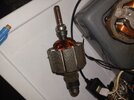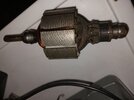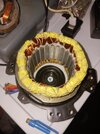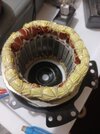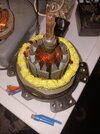Nigel;
Your very funny anecdote reminded me of a similar one, also involving a VCR.
A relative of mine called me to ask me because the the video had severe streaking. I told him that the first cure is to clean the VCR’s heads. Did he have a head cleaning cassette? When he answered no, I then advised to open up the VCR, find the drum head and clean it up.
A couple of hours later, he called me again that the image now was worse, much worse! I told him I would drive to his home.
When I arrived and inspected the VCR, the drum head was scratched and abraded to an unbelievable amount. I asked him to show me the materials which he had used to “clean” the head. He retrieved from the waste bin a sheet of coarse sandpaper, perhaps 60 to 100 grit.

